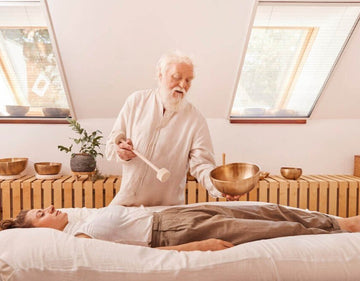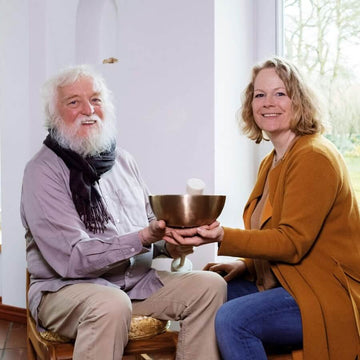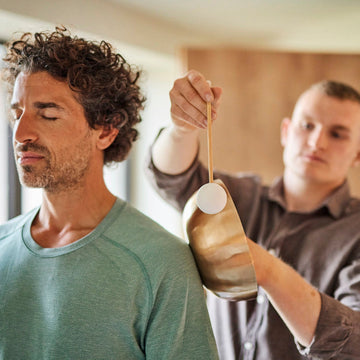Do you dream of becoming self-employed? Self-employment in sound massage offers numerous opportunities to live your passion while working flexibly and independently. To ensure that your path to self-employment runs smoothly, we have put together a comprehensive checklist for you. Whether you already have experience as an entrepreneur or are taking this step for the first time - our checklist for self-employment will help you keep an eye on all the important aspects.
Note: This checklist can also serve as a guide for other full-time or part-time self-employment, as the essential steps are identical. However, please note that all content in this article is for information purposes only and does not constitute legal advice.
Step by step to becoming self-employed as a sound massage practitioner
( ) Complete your basic training
Choose your training and a training rhythm that suits you. The Peter Hess® Sound Massage training offers you a particularly well-founded basis.
( ) Think about further training and specializations
Further training courses are not a must after completing basic training in order to get started. Nevertheless, it can make sense to further specialize your knowledge and skills.
( ) Put together your sound massage equipment
If you would like to offer sound massage professionally to others, we recommend this basic equipment:
- Peter Hess® Therapy Singing Bowl – Universal Bowl
- Peter Hess® Therapy Singing Bowl – Large Heart Bowl
- Peter Hess® Therapy Singing Bowls – Pelvic Bowl
- Mallet set consisting of a large, medium, and small mallet, each with a different degree of hardness
You can find out whether you need additional equipment for your individual offerings by reading our guide on basic equipment for a sound massage.
( ) Develop your offerings
Clarify who you want to reach and tailor your offerings to your target group. Don't forget to get an overview of your competition.
( ) Clarify legal and tax issues early on
Find out about the tax and legal basics of self-employment, for example online or from a start-up consultation.
( ) Register your business or freelance activity
Register your business with your city or municipality, or inform them about your freelance activity – even if you only perform the sound massage part-time or as a secondary occupation.
( ) Consider whether you want to become self-employed on a part-time basis
Carefully check the requirements for part-time self-employment. You can find detailed information in the blog post of the Professional Association for Sound Massage Therapy.
( ) Seek advice from your health and long-term care insurance provider
Depending on what your self-employment will look like and to what extent you carry it out, there will be adjustments to your health and long-term care insurance.
( ) Find out about your pension insurance obligation
Check whether you are subject to compulsory pension insurance in your new self-employment and whether you have to make contributions. The German Pension Insurance can advise you.
( ) Check other insurances
It is recommended to take out professional liability insurance. Research which other insurances may be useful for you.
( ) Get an overview of your finances and reserves
If you become self-employed with sound massage as your main occupation, it is good to have clarity about your current financial situation and, if necessary, to build up possible reserves.
( ) Think about marketing and advertising
Consider how you can make yourself visible to your target group and generate new customers. A website, social media and other advertising materials will support you in this.
( ) Get an overview of bookkeeping and taxes
In Germany, you are obliged to keep proper accounts. You may also be subject to sales tax and trade tax.
( ) Consider where your practice room should be
You can offer the sound massage in rented rooms, at home or mobile. There are certain requirements that you must observe.
( ) Network with others
Exchanging ideas with other sound enthusiasts will help you stay on the ball and get new input. The International Professional Association for Sound Massage Therapy e.V. can provide you with optimal support.







